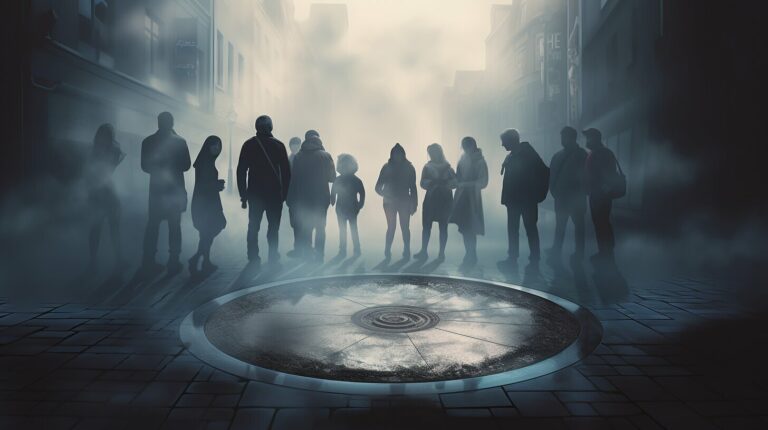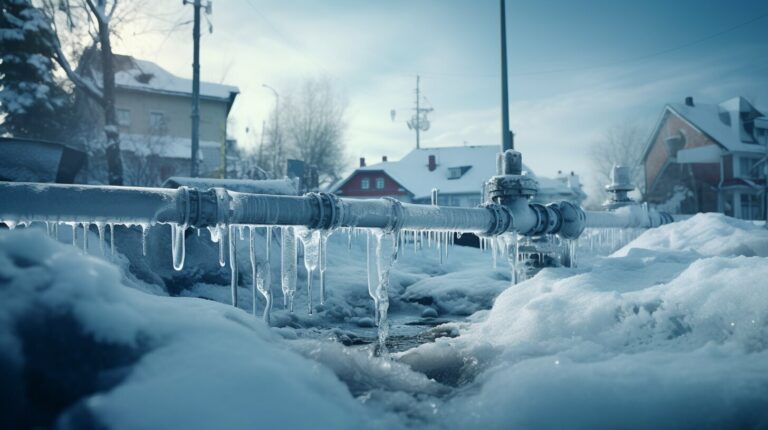Mystery Solved: Why Does Water Taste Bad in the Morning?
Have you ever wondered why water seems to have a strange taste when you drink it in the morning? It’s a common phenomenon that has puzzled many of us. But fear not, dear readers, for I have delved into the depths of science to uncover the secrets behind this everyday mystery!
Key Takeaways:
- When water is exposed to air, it absorbs carbon dioxide, forming carbonic acid and changing its taste.
- Plastic bottles can affect the taste of water, releasing hormone disruptors when heated.
- Chlorination of tap water can leave it with a chemical taste.
- Algae, bacteria, and dissolved metals can contribute to a musty or metallic taste.
- Regularly cleaning water receptacles and avoiding letting water sit out for too long can help maintain fresh-tasting water in the morning.
The Science Behind Morning Water Taste
The taste of water in the morning can be attributed to a fascinating scientific process involving the interaction between air and carbon dioxide. When water is exposed to the air, it absorbs carbon dioxide molecules, which then react with water molecules to form carbonic acid. This slight increase in acidity is what alters the taste of the water, giving it that peculiar flavor in the morning.
But why does this happen? Well, it turns out that carbon dioxide is more soluble in colder water, which is why we notice the change in taste when we leave a glass of water out overnight. As the water cools down, it’s able to absorb more carbon dioxide from the surrounding air, leading to a higher concentration of carbonic acid and a noticeable difference in taste.
This phenomenon is also influenced by our taste buds. Our taste buds have different sensitivities to various tastes at different times of the day. In the morning, our taste buds are more sensitive to bitter flavors and less sensitive to sweet and salty flavors. This could explain why water, which is generally considered tasteless, may have a slightly off-putting taste in the morning.
| Morning Water Taste: Key Factors | Impact on Taste |
|---|---|
| Air and carbon dioxide interaction | Increases acidity, altering taste |
| Taste bud sensitivity | More sensitive to bitter flavors in the morning |
So, the next time you take a sip of water in the morning and notice a change in taste, remember that it’s all part of a fascinating scientific process. Embrace the quirkiness and enjoy your refreshing glass of morning water!
Factors Affecting Morning Water Taste
Several factors contribute to the less-than-pleasant taste of water in the morning, ranging from the materials used for storage to the treatment processes it undergoes.
Let’s start with the storage containers we use. Plastic bottles, while convenient, can actually affect the taste of water over time. When these bottles are exposed to heat, they release hormone disruptors that can subtly alter the flavor of the water inside. So, if you’ve ever wondered why the water you left in your car overnight tastes a bit off in the morning, it could be the result of this chemical interaction.
Next, let’s talk about tap water. Most tap water undergoes a chlorination process to ensure its safety. However, this process can leave a chemical taste in the water, especially if it has been sitting out overnight. The chlorine can react with residual organic matter in the water, resulting in a less-than-pleasant flavor.
Finally, we should consider the presence of algae, bacteria, and dissolved metals in water. These contaminants can contribute to a musty or metallic taste, making your morning water less enjoyable. Regular cleaning of water receptacles is essential to prevent the growth of bacteria and maintain fresh-tasting water.
| Factors Affecting Morning Water Taste | Taste Impact |
|---|---|
| Plastic Bottles | Release of hormone disruptors when heated |
| Tap Water Chlorination | Chemical taste due to reaction with residual organic matter |
| Algae, Bacteria, and Dissolved Metals | Musty or metallic taste |
So, the next time you take a sip of morning water and notice a less-than-pleasant taste, remember that it’s not just your imagination. Factors like plastic bottles, tap water chlorination, and contaminants can all contribute to this phenomenon. By understanding these factors and taking steps to maintain fresh-tasting water, you can ensure a more enjoyable drinking experience to start your day off right.
The Impact of Plastic Bottles on Water Taste
Did you know that the type of container you use to store your water could affect its taste in the morning? It may come as a surprise, but plastic bottles can actually alter the flavor of your water over time. This is due to the release of hormone disruptors when the bottles are heated. So, if you’ve ever wondered why your morning water tastes a bit off, it could be the plastic bottle to blame.
The hormone disruptors found in some plastic bottles can leach into the water, especially when exposed to heat. These disruptors can have a subtle but noticeable effect on the taste of your water. While the amount of hormone disruptors released may be small, their presence can still alter the overall flavor, making it less appealing to drink.
To ensure a better tasting morning water, it’s recommended to opt for alternative container options, such as glass or stainless steel, which do not release hormone disruptors. By making this simple switch, you can enjoy a fresher and more enjoyable drinking experience.
| Container Type | Taste Impact |
|---|---|
| Plastic Bottles | Can release hormone disruptors and alter the taste |
| Glass Bottles | No impact on taste, preserves water quality |
| Stainless Steel Bottles | No impact on taste, keeps water fresh |
Remember, the type of container you choose matters when it comes to the taste of your morning water. By being mindful of the materials used and opting for alternatives to plastic bottles, you can start your day with a refreshing and enjoyable drink.
Tap Water Treatment and Taste
The taste of tap water in the morning can be influenced by the treatment methods employed, particularly the use of chlorination. When water is treated with chlorine, it can leave behind a chemical taste that many people find unpleasant. This is because chlorine is added to tap water as a disinfectant to kill harmful bacteria and viruses. While it serves an important purpose in keeping our water safe, it can also alter the taste.
Chlorine interacts with organic matter in the water, forming compounds known as disinfection byproducts (DBPs). These DBPs can give the water a slightly bitter or metallic taste. The concentration of DBPs can vary depending on factors such as the source of the water and the amount of chlorine used in the treatment process.
Aside from chlorination, tap water can also acquire a taste from other factors. Algae, bacteria, and dissolved metals present in the water can contribute to a musty or metallic taste. These impurities can come from various sources, including the pipes and infrastructure through which the water travels before reaching our homes.
To mitigate these taste issues, there are a few steps you can take. First, you can try using a water filter that is specifically designed to remove chlorine and other impurities. This can improve the taste and odor of your tap water. Additionally, letting the water sit in an open container for a short while can help dissipate some of the chlorine and reduce the chemical taste. Lastly, storing tap water in a clean container and regularly cleaning water receptacles can prevent the buildup of algae and bacteria, ensuring that your morning water tastes fresh and clean.
| Treatment Methods | Pros | Cons |
|---|---|---|
| Chlorination | – Effective in killing harmful bacteria and viruses – Widely used and easily implemented |
– Can leave a chemical taste – Forms disinfection byproducts – May require additional treatment to remove DBPs |
| Water Filtering | – Improves taste and odor of tap water – Removes impurities including chlorine – Enhances overall water quality |
– Requires regular filter replacement or maintenance – Can be costly depending on the type of filter |
| Proper Storage and Cleaning | – Prevents the growth of algae and bacteria – Ensures fresh-tasting water in the morning |
– Requires diligence and regular maintenance – Water may still have residual taste depending on the source |
Overall, understanding the factors that can affect the taste of tap water in the morning allows us to make informed choices to improve our drinking experience. By considering the treatment methods employed, utilizing water filters, and practicing proper storage and cleaning, we can enjoy a refreshing and enjoyable glass of water to start our day.
Maintaining Fresh Morning Water
To ensure a refreshing start to your day, it’s crucial to take steps in maintaining the taste of your morning water. The first and perhaps most important tip is to regularly clean your water receptacles. Over time, bacteria and other contaminants can accumulate, leading to an unpleasant taste. By washing your bottles, pitchers, or glasses with hot, soapy water and rinsing them thoroughly, you can eliminate any buildup and keep your water tasting fresh.
Another key factor in maintaining the taste of your morning water is to avoid letting it sit out for too long. When water is left exposed to air for extended periods, it can absorb odors and flavors from its surroundings. To prevent this, try to consume your water shortly after pouring it or consider investing in airtight containers that can help preserve the taste.
If you prefer your morning water chilled, using ice cubes can be a refreshing addition. However, be mindful of the ice trays you use. Plastic ice trays can sometimes impart a plastic-like taste to the water, so opting for silicone or stainless steel trays can help preserve the purity of your water’s taste.
| Tips for Maintaining Fresh Morning Water |
|---|
| Regularly clean water receptacles with hot, soapy water. |
| Avoid letting water sit out for too long to prevent absorption of odors and flavors. |
| Consider using silicone or stainless steel ice trays to prevent plastic taste in chilled water. |
By following these simple tips, you can ensure that your morning water tastes as refreshing as it should, setting you up for a great start to the day. Remember, taking care of the quality of your water is not only essential for taste but also for your overall health and well-being.
The Mystery Unraveled: Enjoying Morning Water
Now that we’ve uncovered the reasons behind the less-than-ideal taste of water in the morning, you can make informed choices to enhance your morning hydration ritual.
Have you ever noticed that water tastes a little off when you leave it out overnight? There is a scientific explanation for this phenomenon. When water is exposed to air, it absorbs carbon dioxide, which then forms carbonic acid, making the water slightly acidic and changing its taste. This change in taste is not dangerous to humans, but it can dissolve shells of sea creatures like crabs.
But that’s not all. Plastic bottles can also affect the taste of water over time. When heated, they can release hormone disruptors that alter the flavor. So, it’s worth considering using alternative containers when possible.
Furthermore, the chlorination of tap water can leave it with a chemical taste. This taste can be unpleasant for some, but it is done to ensure the water is safe to drink. Algae, bacteria, and dissolved metals can also contribute to a musty or metallic taste, so it’s essential to clean water receptacles regularly and not let water sit out for too long to prevent bacterial growth.
By understanding these factors, you can take steps to maintain fresh-tasting water in the morning. Consider using glass or stainless steel containers instead of plastic, and look for water filtration options that can help reduce the chemical taste in tap water. Remember to clean your water receptacles regularly and refill them with fresh water each morning to ensure a pleasant hydration experience.
FAQ
Why does water taste bad in the morning?
Water can taste bad in the morning due to several factors. When water is left out overnight, it absorbs carbon dioxide from the air, forming carbonic acid, which makes the water slightly acidic and changes its taste. Additionally, plastic bottles can release hormone disruptors when heated, affecting the taste of the water. Chlorination of tap water can leave it with a chemical taste, and the presence of algae, bacteria, and dissolved metals can also contribute to a musty or metallic taste.
Can the change in taste of water in the morning be harmful?
The change in taste of water in the morning is generally not harmful to humans. However, it is important to note that the slightly acidic nature of the water can dissolve the shells of sea creatures like crabs. It is also advisable to clean water receptacles regularly and avoid letting water sit out for too long to prevent bacterial growth.
How do plastic bottles affect the taste of water in the morning?
Plastic bottles can affect the taste of water in the morning because they can release hormone disruptors when heated. These disruptors can alter the flavor of the water and may contribute to a bad taste. It is recommended to use alternative materials for storing water, such as glass or stainless steel, to avoid this issue.
Why does tap water sometimes have a chemical taste in the morning?
Tap water can have a chemical taste in the morning due to the chlorination process. Chlorine is added to tap water to kill harmful bacteria and ensure its safety for consumption. However, residual chlorine can sometimes give the water a chemical taste. Letting tap water sit out overnight or using a water filter can help reduce this taste.
How can I maintain fresh-tasting water in the morning?
To maintain fresh-tasting water in the morning, it is important to clean water receptacles regularly to prevent bacterial growth. Avoid letting water sit out for too long, as this can also contribute to a change in taste. Using alternative materials like glass or stainless steel for storing water can help avoid any potential taste alterations caused by plastic bottles.
Are there any tips for enjoying a pleasant drinking experience in the morning?
Absolutely! To enjoy a pleasant drinking experience in the morning, remember to start with clean water receptacles and fresh water. If tap water has a chemical taste, consider using a water filter or letting the water sit out for a while before consuming. Using alternative materials for storing water, such as glass or stainless steel, can also enhance the taste. Cheers to a refreshing morning hydration!






